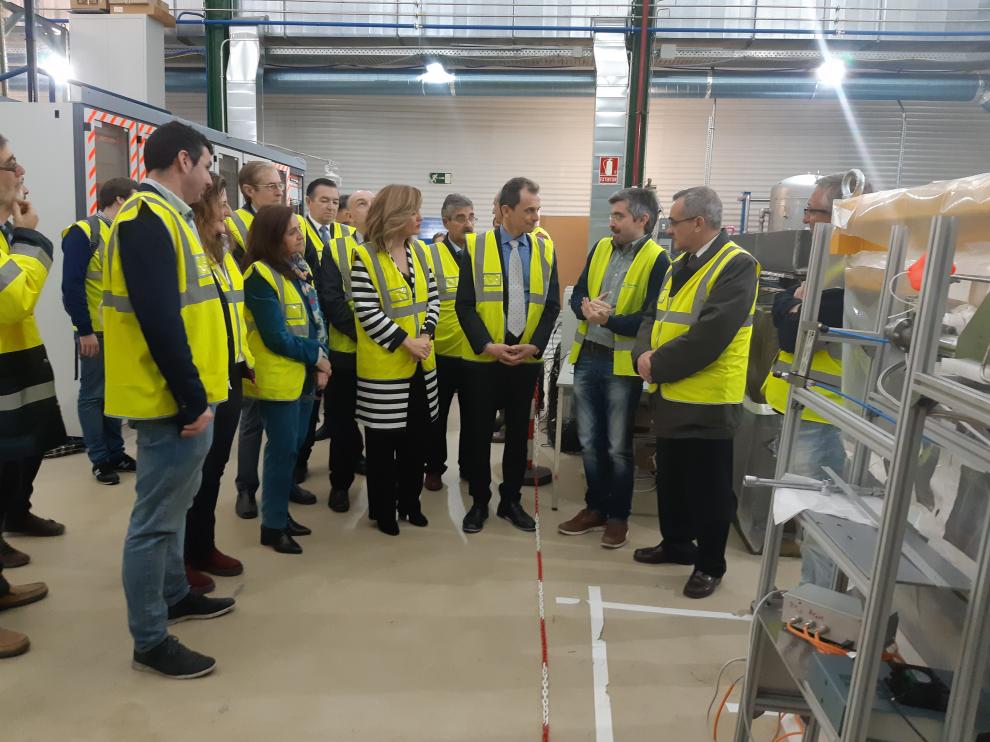It hosts 8 experiments in international astroparticles.

Original source in Spanish: Heraldo de Aragón. Translated by Google Translate.
The Minister of Science, Innovation and Universities, Pedro Duque , visited the Canfranc Underground Laboratory (LSC), the second largest in Europe, in which 8 experiments on international astroparticles are currently underway. In its tunnels, dark matter, neutrino physics, geodynamics and biology are investigated.
Pedro Duque has highlighted the enormous potential of this installation, classified as Singular Technological Scientific Infrastructure (ICTS), dedicated to underground science, especially the investigation of dark matter and the detection of unlikely of dark matter and rare event searches in general. The cosmic silence offered by the tunnels located under the peak Tobazo, about 850 meters deep, in the Aragonese Pyrenees create a unique space that allows us to investigate the great mysteries of the Universe. The minister was accompanied by the Vice Rector for Scientific Policy of the University of Zaragoza, Luis Miguel García Vinuesa; the director of the LSC, Carlos Peña Garay; the councillor of Innovation, Research and Universities from the Government of Aragon , Pilar Alegría , as well as other authorities.
The Underground Laboratory of Canfranc, located between the Canfranc railway tunnel and the Somport road tunnel, is by dimensions, about 1250 m2, the second largest in Europe . This space was created 34 years ago by the research group of excellence in Nuclear Physics and Astroparticles of the University of Zaragoza (1985) and since then has experienced a high development and international recognition. The LSC is managed by a Consortium between the Ministry of Science, Innovation and Universities , the Government of Aragon and the University of Zaragoza , after the facilities were completed in 2010.
New challenges
The University of Zaragoza will soon launch a master’s degree in Physics of the Universe: Cosmology, Astrophysics, Particles and Astroparticles, a pioneer in Spain for the study of these disciplines.
In addition, the minister was able to learn about the creation of the ‘Center for Astroparticles and High Energy Physics’ (CAPA) , which would bring together the activity of fifty researchers from different research groups at the University of Zaragoza, together with the scientists from the Canfranc Underground Laboratory and the Astrophysics Observatory of Javalambre.
This synergy of forces and knowledge will be decisive in order to compete internationally in attracting funds and projects of relevance and excellence and would favor better governance, avoiding dispersion in the study of the cosmos.
Specifically, the Underground Laboratory of Canfranc, in the Pyrenees of Huesca, offers a low radioactive background environment ideal for carrying out experiments aimed at exploring the frontiers of particle and astroparticle physics.
Meanwhile, the Astrophysical Observatory of Javalambre, located in the Sierra de Javalambre, in Teruel, conceived and built by the Center for Physics Studies of the Cosmos of Aragón, allows large astronomical maps.
The future CAPA research center would also have a strong relationship with the Pedro Pascual Benasque Science Center , the installation of the Spanish scientific system dedicated to the organization of high-level international scientific meetings.
Unravel the mystery about the structure of the Universe
Most of the Universe can not be seen because it does not emit any kind of radiation. This so-called dark matter, whose existence is known only by its gravitational effects in space, constitutes approximately a quarter of the total matter and energy of the Universe. It is not known what particles constitute it, so that solving the problem of dark matter is one of the main challenges that physics deals with today. Revealing this mystery would provide us with fundamental information about the history and structure of the Universe and, in parallel, it would allow us to complete our understanding of the subatomic world, since the elementary particles we know can not explain either matter or dark energy.
Another fundamental issue in particle physics is the nature of neutrinos. Although the Standard Model of particle physics assumes that neutrino and antineutrino are distinct particles, we do not really know if they are different or are their own antiparticle. This can be investigated in underground laboratories looking for a very unlikely process called double beta decay without neutrino emission, not observed to date, which would only occur if the neutrino is its own antiparticle.
The projects
The underground laboratory houses 8 experiments in astroparticles of an international nature. These are studies on dark matter (ANAIS, ArDM and TREX-DM), neutrino physics (BiPo, NEXT, SuperKGd), geodynamics (GEODYN) and biology (GOLLUM). In addition, this facility hosts other experiments that are in the preparation phase: one on neutrino physics (CROSS) and another on neutron physics (CLYC).
